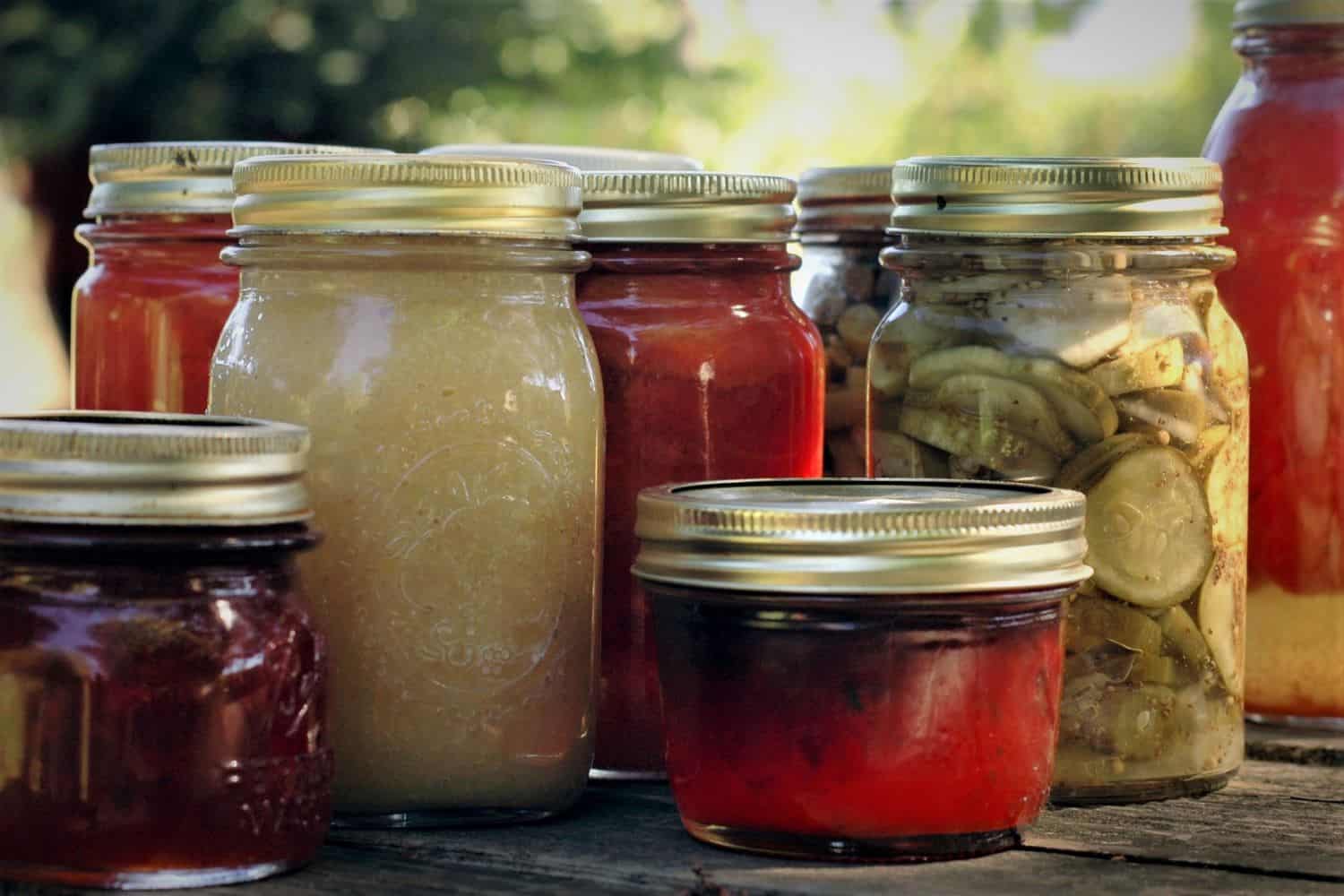
Water bath canning for beginners is growing in popularity. Because of the COVID-19 pandemic, millions of people have discovered (or rediscovered) backyard gardening. The result is more gardeners growing more fruits and vegetables. With a bounty of new homegrown produce, these new gardeners now want to know how to preserve their harvests.
Preserving fresh fruits and vegetables is commonly known as “canning.” Most people do their canning in glass jars, such as the canning jars from companies such as Ball and Mason.
The most familiar type of canning is what is known as a water bath canning. Water bath canning for beginners starts with cooking the fruits or vegetables according to USDA directions. The put the cooked produce in canning jars and process it in a water bath.
It sounds a bit complicated, but it really isn’t at all. When I was growing up, the produce from the garden was harvested. Then my mother and grandmother spent days cutting up the fruits and vegetables. Next, the produce was cooked and put into jars.
My job, since I was a little girl, was to pour the paraffin wax on the jelly jars. It was my favorite job. I would get some warm wax on my fingers, and then I got to peel it off. (NOTE: It is no longer recommended to seal the jars with wax because mold can grow under the wax.

Today’s Version of Water Bath Canning for Beginners
Fast forward a few decades and things have changed a good deal in the water bath canning for beginners world. For starters, there is the bible of preservers called the Ball Blue Book Guide to Preserving. It is a magazine style book with everything you need to know about basic water bath canning. This wonderful book is the perfect guide to safe canning, because it follows USDA recommendations. It sells for less than $20, and it’s worth every penny.
The Ball Blue Book is a must if you want to preserve your harvest. Frankly there’s nothing quite like homemade preserves or vegetables from your garden—especially in the dead of winter. So, you should decide how much to preserve for you and your family. Also preserve what your family likes and will eat. Don’t preserve it just because you think you might eat it.
Foods to Preserve Safely Using Hot Water Bath Canning
Jams, jellies, preserves, marmalades and conserves
Fruits (Raw or Hot pack)
Tomatoes and tomato sauces (without meat)
Relish and pickles (with added vinegar)
Fermented foods such as sauerkraut
Water Bath Canning for Beginners: Tools Needed
There are some tools you need for water bath canning. Many of the items you need are probably in your kitchen right now. Sometimes these tools can be found in a thrift shop. These include:
- Dutch oven
- Food processor (for some canning)
- Soup ladle
- Timer
- Paper towels
- Sharp knives
Many of the tools needed for water bath canning are sold as a kit. A typical canning kit includes jar tongs, a bubble remover (more on that in a minute), and a jar funnel. Sometimes these tools are sold along with a water bath canner. This is simply a very large pot with a metal rack inside to hold the jars while they process in the water bath. I like to cook my produces in a large pot called a Dutch oven.
Typical Canning Kit Items, Plus Other Items
- Jar tongs
- Bubble remover
- Wide mouth funnel
- Water bath canning pot
- Canning jars
- Canning Lids
- Ball Blue Book of Preserving
- Potato masher
- Lemon and Lime Juice
- Pickling Salt (not table salt)
- 5% white vinegar (Generic vinegar is usually 4% and not recommended)
A bubble remover is simply a flat piece of plastic with markings which can tell you the amount of headspace you need for your particular produce. You simply move it around the edge of the jar to remove any air bubbles that may have occurred when putting the harvest in the jar. You don’t want your jars to contain air bubbles, which can allow mold to grow in the jar.
Many different Canning Supplies Kits are available on Amazon. Check Prices and Availability.
Canning Jars
You will also need jars to hold your harvest. They range in size from little 4-ounce jars which are nice to give as gifts, 8-ounce, 12-ounce, pints, quarts and gallons. Your recipe will tell you which jars to use for your produce.
The 8 oz. jars are typically used jellies, jams and preserves. The 12 oz. jars can also be used in a pinch. Pints are used for fruits and vegetables and quarts are used for items such as tomato sauces. Gallons are not recommended for water bath canning because the produce cannot be heated thoroughly during the processing in the water bath.
There are different styles of jars, too. The 8 oz. and 12 oz. jars have what is known as a regular mouth lid. The other sizes can either be wide mouth or regular mouth. All of these jars come in a case of 12 except the gallon jars. You can find them in hardware stores, garden centers, farm markets, grocery stores, some big box stores and on Amazon.com.
When you buy a case of jars, they come with two-piece lids and rings, which are necessary for processing your recipe. The flat lid is not reusable and should be discarded after the jar is empty. The ring can be washed and reused until it becomes discolored or rusty.
Canning jars will last many years with proper care. Always check for chips on the rims. In that case, the jar should be discarded. Some jars have vegetable patterns on them, some have a quilted design and others are plain. Never reuse jars from commercial foods. They will not seal properly and can break in the water bath.
Water Bath Canning for Beginners: Canning Day
On your water bath canning day, ignore the phone and send the kids off to grandma’s house. Canning day is for canning! Clean your counters off and clean your sink. Cleanliness is crucial in the kitchen anytime but especially on canning day.
You no longer have to boil your jars in water, as in the old days. Instead, run them through the dishwasher. Time it so the jars are hot and ready to be filled as your recipe is cooked and ready. No dishwasher? Simply wash the jars in very hot water and keep them in a pot of hot, simmering water until ready to use.
Wash and rinse the lids and rings in hot water. No need to boil them either. You can keep them in some hot water to keep the seals warm and pliable. Never put them in an oven to dry. The jars can crack either in the oven or while processing them.
Before starting to cook your food, fill the water bath pot with hot water. Then turn on the heat since it will take a while for it to reach boiling. Keep in mind that the water should cover the tops of the jars by at least one inch for proper processing. Follow the recipe directions for the timing and possibly the thickness depending on what you are cooking.
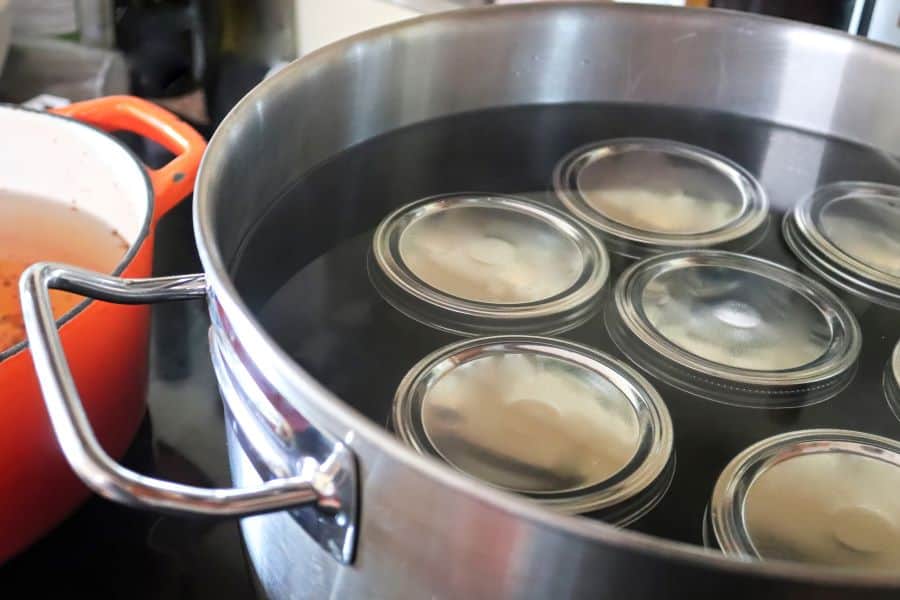
Let the Canning Begin!
When the food reaches the correct temperature, have your jars ready to be filled. Use the jar funnel to help fill the jars. Take your bubble remover and run it around the jar all the way to the bottom to remove air bubbles.
Before putting the lids and rings on, use a wet paper towel to clean off the jar rims. This will remove any juice or food, which could keep the seal from sealing properly. After cleaning the rim, place the lid and ring on the jar and close it. It should be finger tight or to the point of resistance.
Use the jar lifter to place your jars in the boiling water and put the pot lid on. Your timing begins AFTER the water comes back up to a boil. Because we all live at different altitudes, your timing can be different. You may need to add time to your processing. You can easily check on the internet what your sea level is for your town. Don’t think because it may be flat where you live that you don’t have to think about this.
If you live at altitudes between:
1,000 – 3,000 feet: add 5 minutes
3,001 – 6,000 feet: add 10 minutes
6,001 – 8,000 feet: add 15 minutes
8,001 – 10,000 feet: add 20 minutes.
After the timer goes off, shut the heat off. Leave the jars in the water for 5 minutes to allow the pressure in the jars to adjust. Remove the jars one by one and allow them to slowly cool on the counter. It is preferable that you don’t move them for at least 12 -24 hours—especially for jellies and jams.
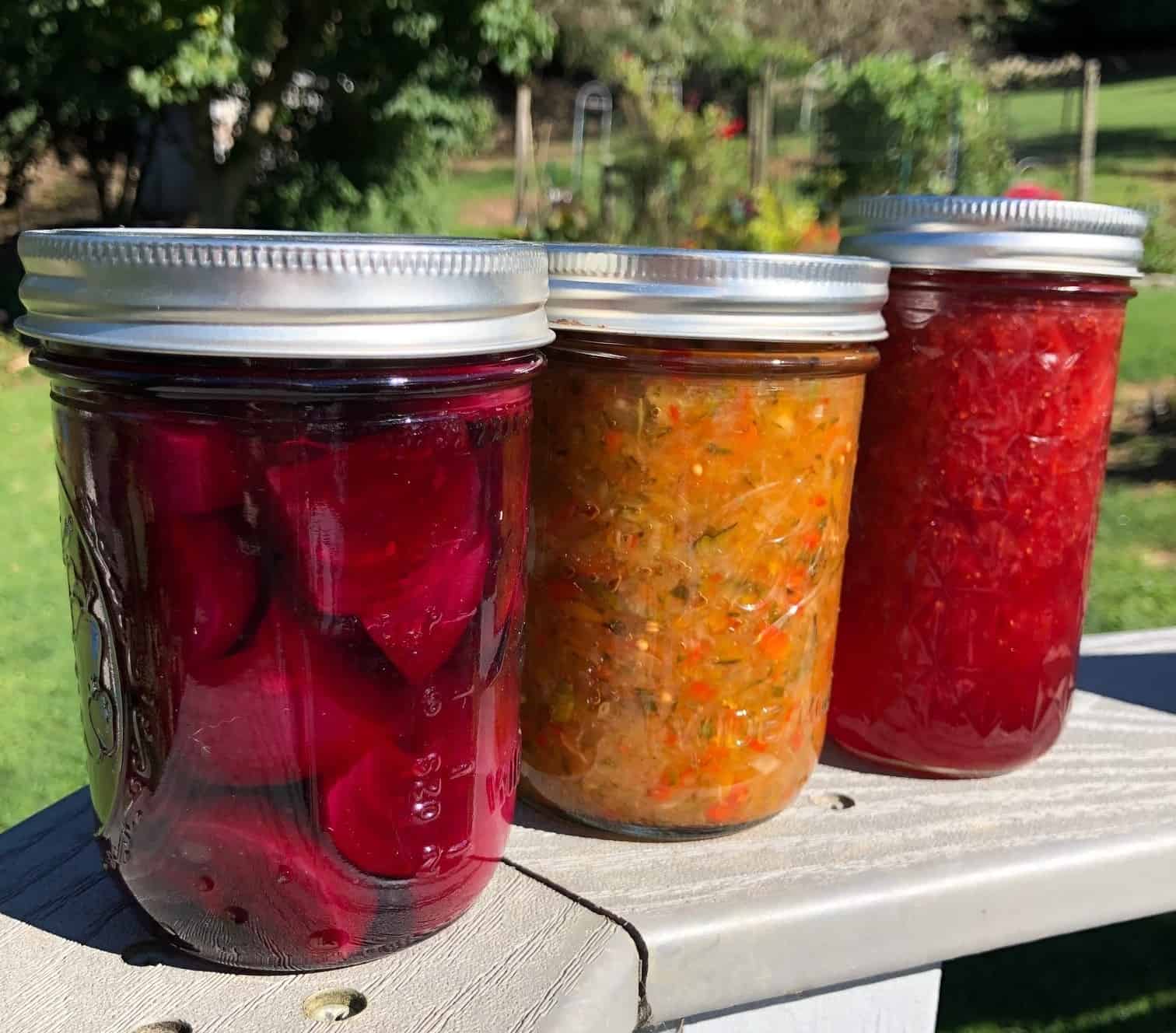
The Sound of Jars Popping
The canning process helps create a vacuum seal, which makes a popping sound. The popping sound tells you the jars have sealed properly. It may take up to 24 hours for them all to seal completely. Never push down the lid. That does not make the jar seal properly. If a jar doesn’t seal completely, you may reprocess it again or simply put it in the refrigerator to be eaten.
After everything is cooled down, mark your lids with a label stating the contents and the date. I like to write on the lid with a magic marker and a label on the front.
What’s next? Enjoy the fruits of your labor. Pun intended! Now read Great Canning Recipes for Beginners!
You might also enjoy reading How to Make Country Style Quiche Lorraine.
Home Garden and Homestead is a proud member of the Amazon Affiliate Program. We earn a small commission from qualified sales when you click on the links in this story. Thank you for supporting this website!


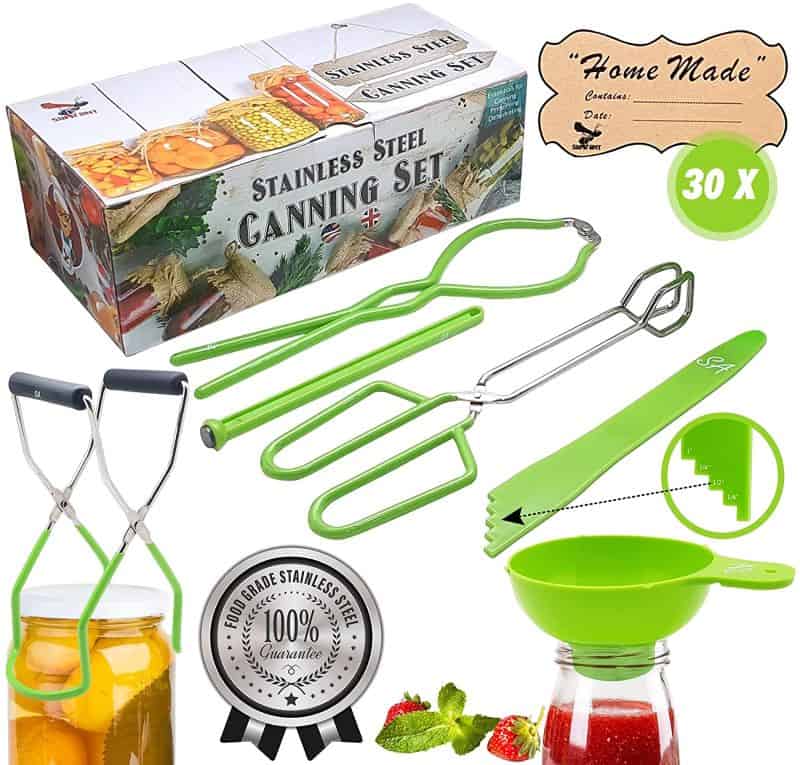
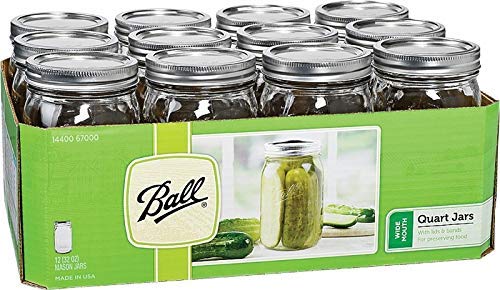

Leave a Reply